The Technique article in this issue, “Checked Plywood Repair” by Kent and Audrey Lewis, is one that I took a special interest in. Several of the boats I’d built, and the teardrop trailer I’d built using the same materials and methods, have been showing areas of plywood that had checked. Work that had held up for years was being undone and I wasn’t sure why.
The oldest of the boats is the gunning dory I built for my father in 1980. John Gardner’s The Dory Book, published in 1978, was my guide for both my introduction to boatbuilding and the plans for the dory. It was the second planked boat I’d built, the first being a Marblehead dory skiff. With the exception of the garboards, both were traditionally built with red cedar planks on oak frames, all finished bright. I had taken Gardner’s advice and used plywood for the garboards to avoid the splitting he noted that happens to the short grain at the ends of natural lumber garboards.
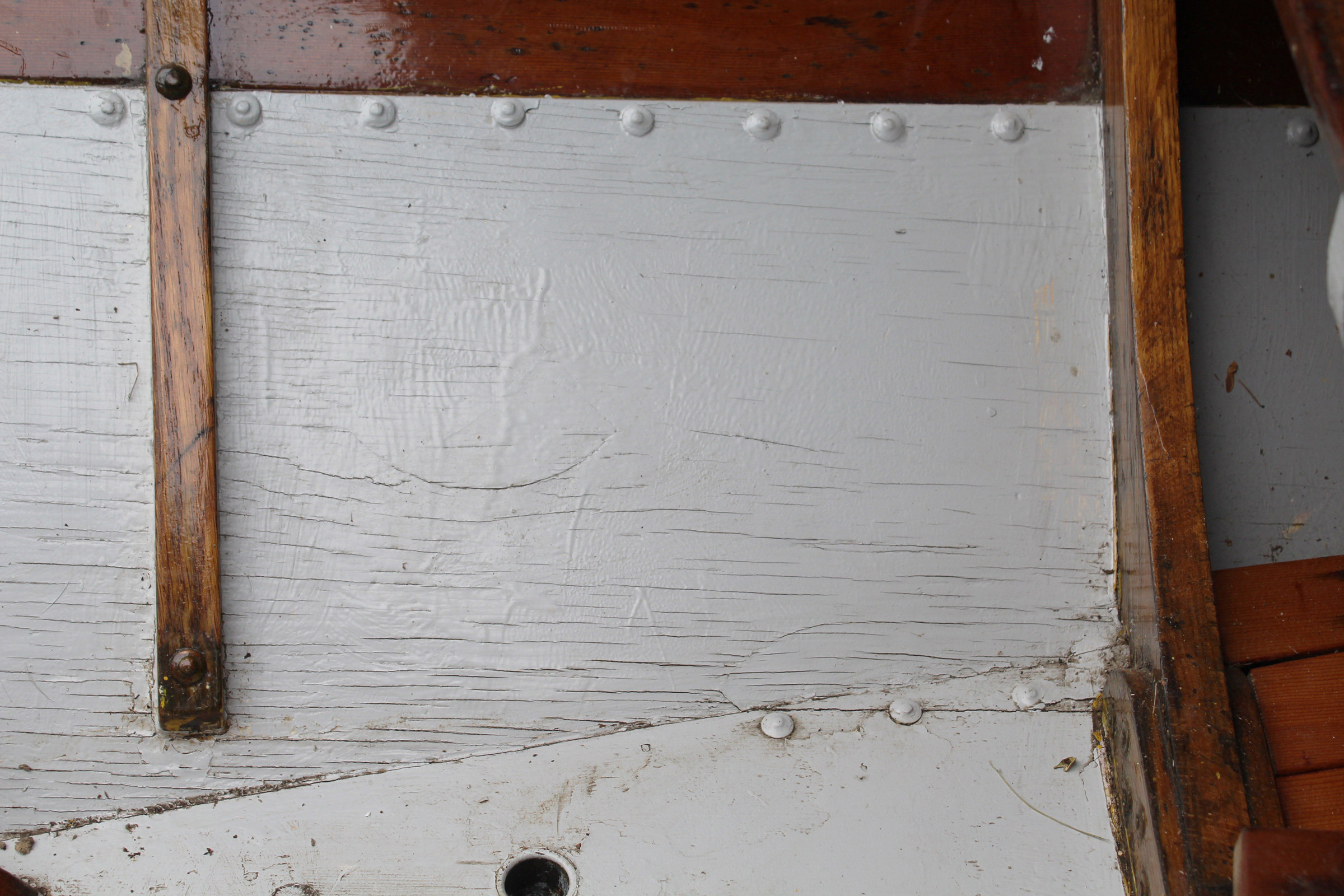
A section of the port garboard in the stern of the gunning dory had the worst of the checking. I had hoped sanding and painting would cure the problem, but after three efforts over the course of several years, it was clear paint wasn’t the solution.
Several years ago—after the dory was kept at my dad’s rowing club, outside, under a tarp that I frequently found not fully covering the boat—the inside faces of the painted fir plywood garboards developed pronounced checks. Looking back again at my copy of The Dory Book, I saw I had underlined “plywood garboards,” but I did not mark what followed: “…plywood does not stand prolonged soaking and drying as well as natural lumber. However, this fault in plywood may be overcome to a large extent by sealing it with plastic.” I know now that by “plastic” Gardner meant “epoxy,” but 44 pages separate his garboard advice from his description of epoxy, and that description only indirectly connects it with “plastic” and covers only the use of epoxy as a bonding adhesive. So, I had only primed and painted the plywood.
I no longer have the dory skiff. In the mid-’80s, I think, I had sold it to a man who took it to Alaska. It last turned up on eBay in Connecticut in 2013, and the pictures posted with the ad seemed to indicate the boat was in very good shape. If it had been stored out of the weather, the plywood garboards might have been in good shape, even after 40-plus years. While building the skiff, I had studied Gardner’s 1977 volume, Building Classic Small Craft. In it, he notes that when using plywood for dory construction, “…coat the surface of the wood with paint and special sealers to prevent it from soaking up water too fast or drying out too quickly.” While several of the boats detailed in the book are made of plywood with joints covered with fiberglass tape set in epoxy, none of them are given overall saturation coats of epoxy. Instead, “before any paint goes on the plywood…the boat should be thoroughly soaked inside and out with a good wood preservative.”
In Gardner’s defense, at the time he wrote these two books, epoxy was still fairly new to amateur boatbuilding. The Gougeon Brothers on Boat Construction, which introduced wood/epoxy composite construction, was published in 1979 and provided a better understanding of the uses of epoxy. In the chapter, “Wood as an Engineering Material,” the Gougeons wrote, “our basic approach is to seal all wood surfaces with WEST SYSTEMS resins. This includes those that come into contact with air as well as those in contact with water.” Later books on composite construction, such as Devlin’s Boatbuilding, published in 1996, offered similar advice: “And always be sure to seal all plywood edges and surfaces with epoxy to ensure maximum longevity and help prevent moisture invasion and veneer degradation.”
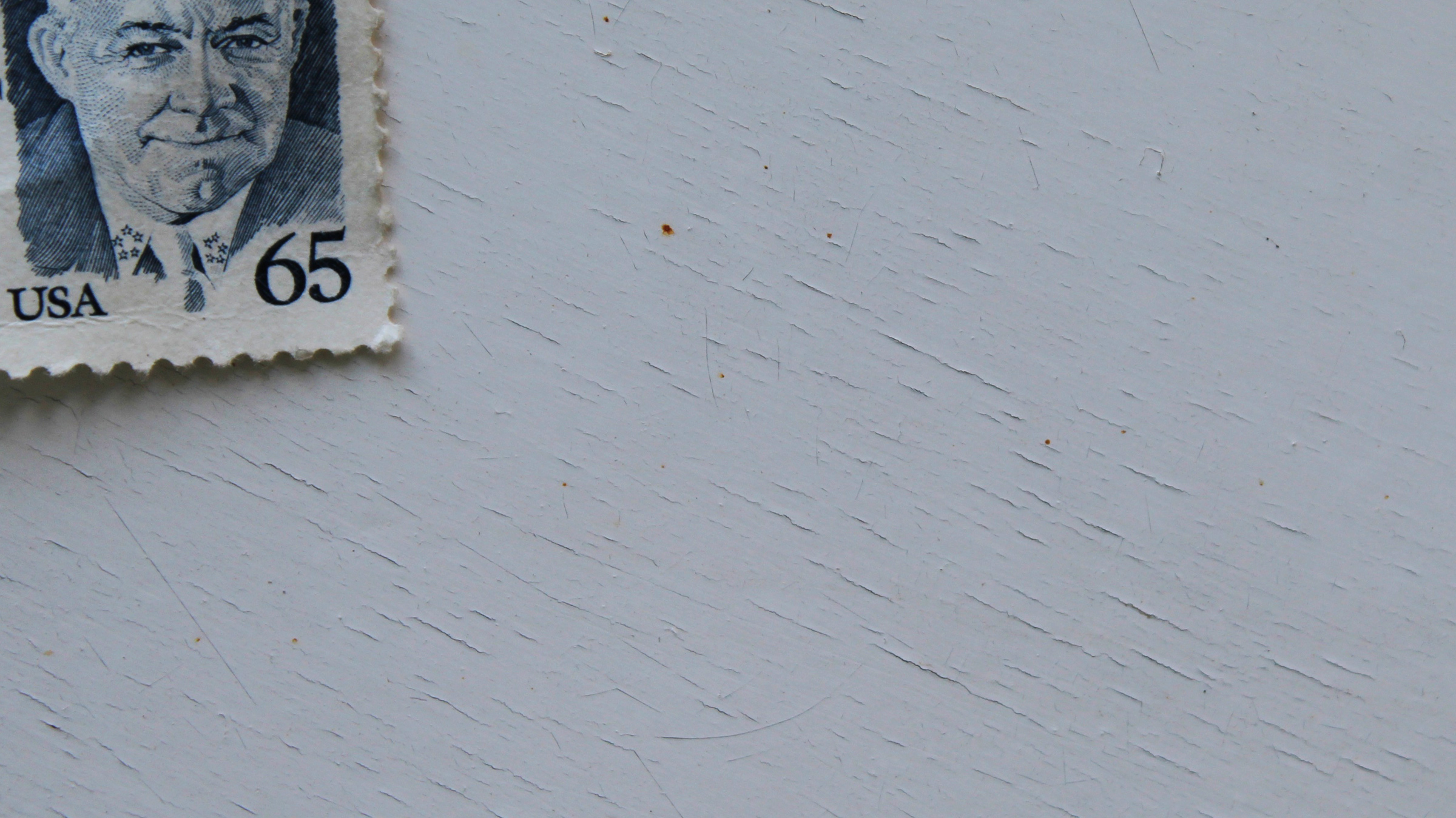
The checking on the Caledonia Yawl’s paint is quite fine, but I suspect the cracks will grow with time as temperature and moisture take advantage of the access to the mahogany plywood underneath.
For most of the boats I built in later years, I used a traditional approach and rarely used plywood. Then in 2003, I switched to glued-lap plywood construction to build Iain Oughtred’s Caledonia Yawl. I used his 1998 book, Clinker Plywood Boatbuilding Manual, as a guide and finished the BS-1088 with plywood primer and semigloss alkyd enamel, without first sealing it with epoxy. Oughtred was of the same mind and noted “I have never coated a boat with epoxy.” My Caledonia’s finish held up well during the 16 years the boat was kept in my garage, but it had to give up its place for another boat and spent 3 years outside under tarps. The paint has now developed a barely discernible pattern of fine checks.
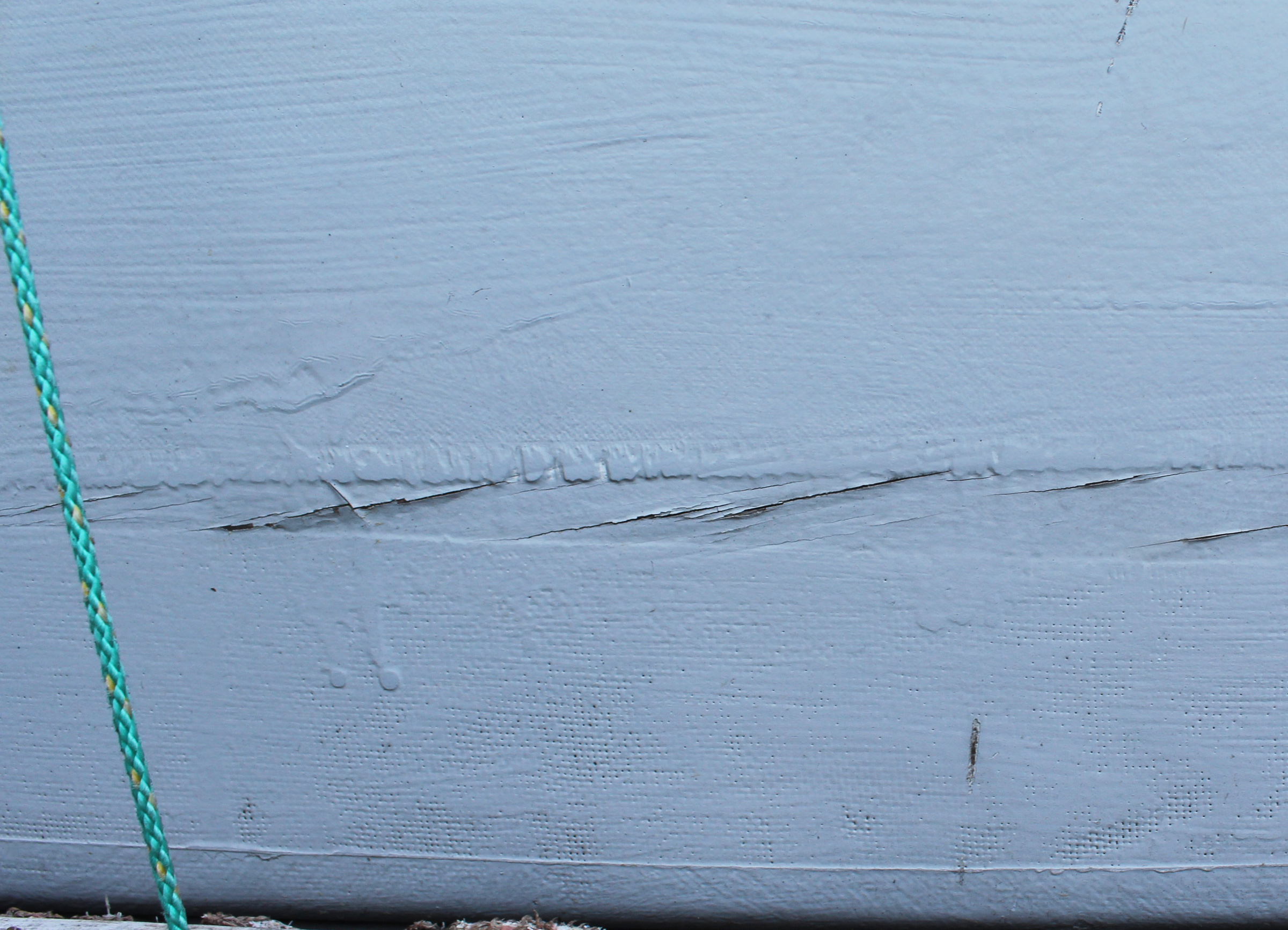
The application of fiberglass on the Escargot was a bit slipshod and there was a gap between pieces of fiberglass. While epoxy covered the exposed plywood in between, that alone wasn’t able to keep the fir plywood from checking.
In 2009, when my son Nate and his high-school pal decided to build an Escargot canal cruiser, I steered them to marine-grade fir plywood because it was less expensive than the mahogany options. The instructions called for sealing, priming, and finishing with marine or deck paint. Nate and I had seen another Escargot—built of fir plywood and painted—and noticed that the finish had checked. We would prevent that by sheathing the exterior surfaces in fiberglass and epoxy. After a dozen years of being parked on the driveway on the sunny south side of the house, covered with poly tarps, the Escargot’s plywood is without checks, with one exception: a 1”-wide gap between spans of fiberglass where the wood was protected by epoxy alone. Some significant cracks in the paint have appeared there.

HESPERIA’s sides are in need of being sanded and coated with epoxy, if not epoxy and light fiberglass. I’ve marked a rectangle in pencil for an area to sand for a test.
The following year, 2010, I built HESPERIA, my garvey camp-cruiser, using BS-1088 plywood and finished with primer and paint. Only the cabin roof got a layer of fiberglass to give its 1/4″ plywood additional strength. The boat spends its time outside under tarps, and the painted surface is now covered with fine but easily noticed checks.
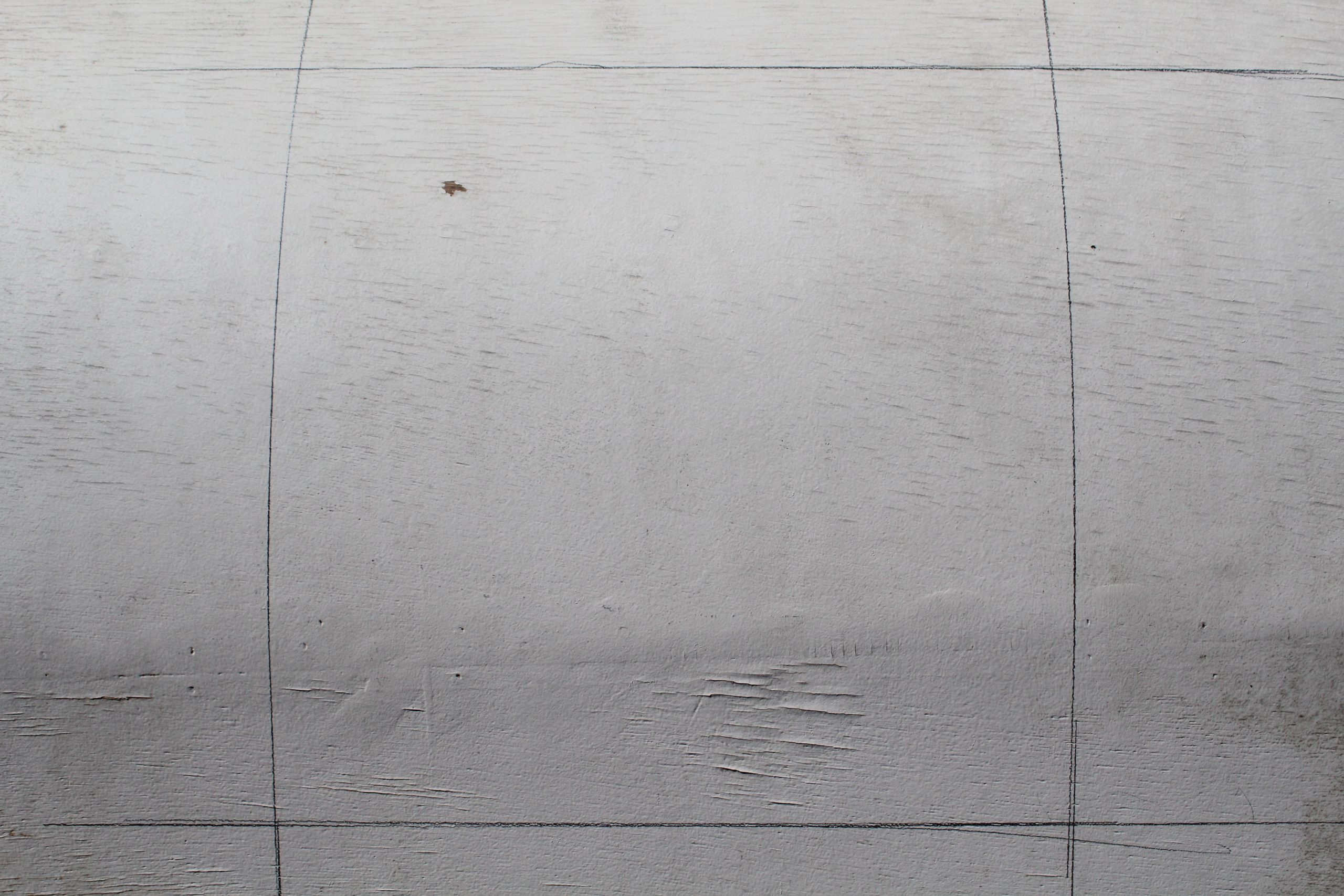
A small section of the mahogany plywood on the teardrop trailer shows that epoxy does help prevent, or at least forestall checking. Just above the patch of checking at the bottom there is a band of intact paint that covers a seam between plywood sheets. The epoxy applied to that joint coated some of the plywood around it and protected it. The pencil marks indicate another area that I would sand and apply a test coating of epoxy.
A teardrop trailer that I built in 2013, and now parked in the back yard, is in even worse condition. I’d built it with the same materials I’ve used for boats, and the plywood on the roof cracked so severely that a couple of years ago I had to peel loose veneer off and fill the voids with ’glass and epoxy before sanding the whole top to bare wood and applying 6-oz ’glass cloth and epoxy. The varnished mahogany plywood sides are badly checked in spite of being sanded and revarnished at least twice; the painted front end looked fine when I ’glassed the top, but it is now checked. I noticed one small area flanking a joint between plywood panels that was still in good shape. It had been protected by the epoxy I’d squeegeed alongside of the seam.

My plywood Greenland kayak, built in 1994, has been outside for much of its life and doesn’t seem much the worse for it.
Two of my boats have survived for decades without any evidence of checking. One is a plywood Greenland-style stitch-and-glue kayak I built in 1994. It is sheathed inside and out with fiberglass cloth and epoxy, primed, and painted. While the kayak’s red topcoat has been worn away in places, there is no evidence of checking despite being stored outside for decades, sometimes covered with a tarp, other times exposed to the weather.
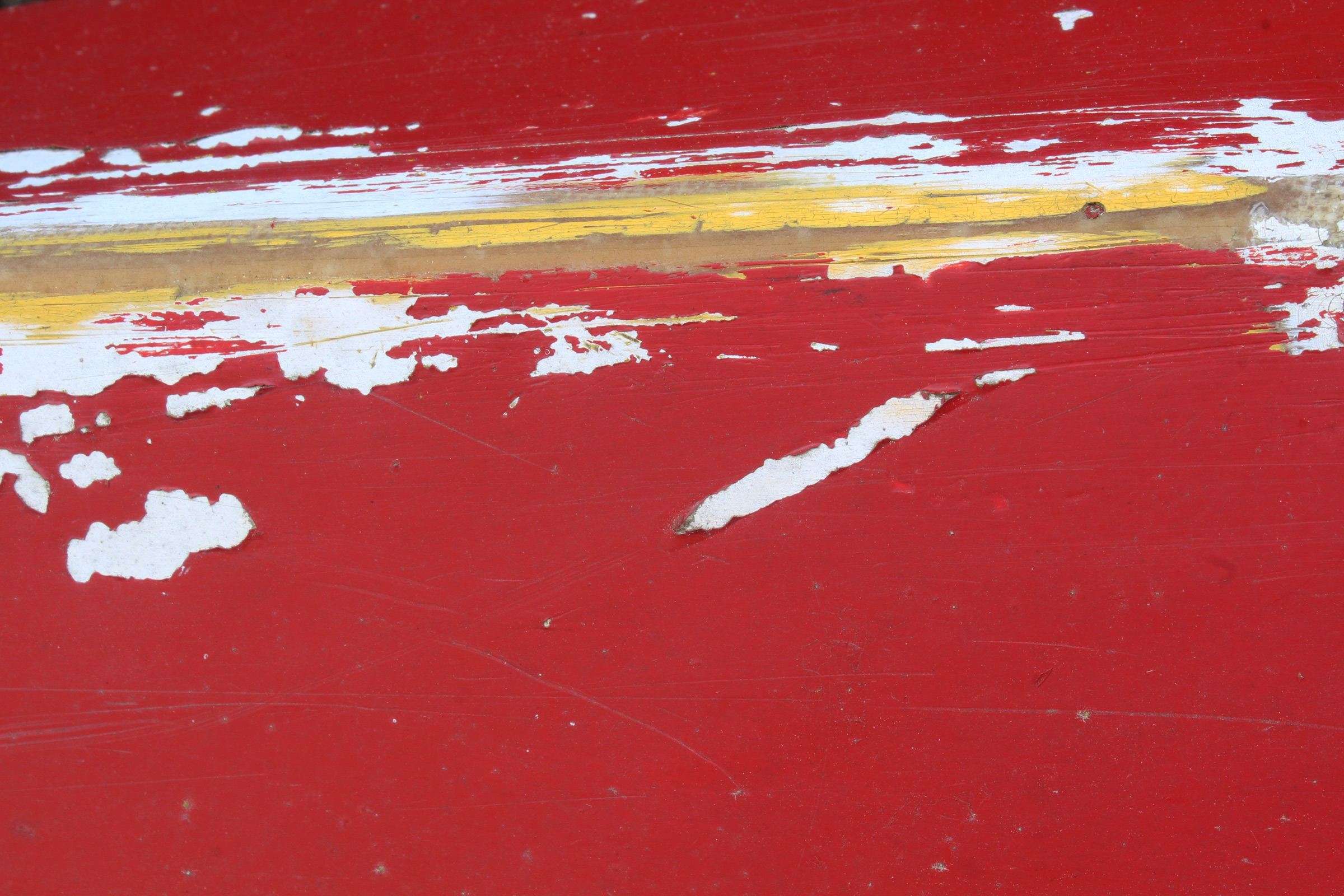
The paint along the kayak’s keel has been worn away by beach launchings and landings, but there is no sign of checking.
The other boat with its finish still unchecked is a decked lapstrake tandem canoe I built in 1988. I got the design from Canoe and Boat Building by W.P. Stevens, published in 1889, and followed the construction method describe by Thomas Hill in his 1987 book, Ultralight Boatbuilding. He, too, wasn’t in favor of an epoxy coating, writing “I do not recommend epoxy saturation for these canoes. Some people believe epoxy applied to plywood prevents checking. I’m not convinced.” He cites two boats that were badly checked in spite of five coats of epoxy on a transom in one case, and epoxy and fiberglass on the deck in another. I followed his advice and finished my canoe with primer and enamel.
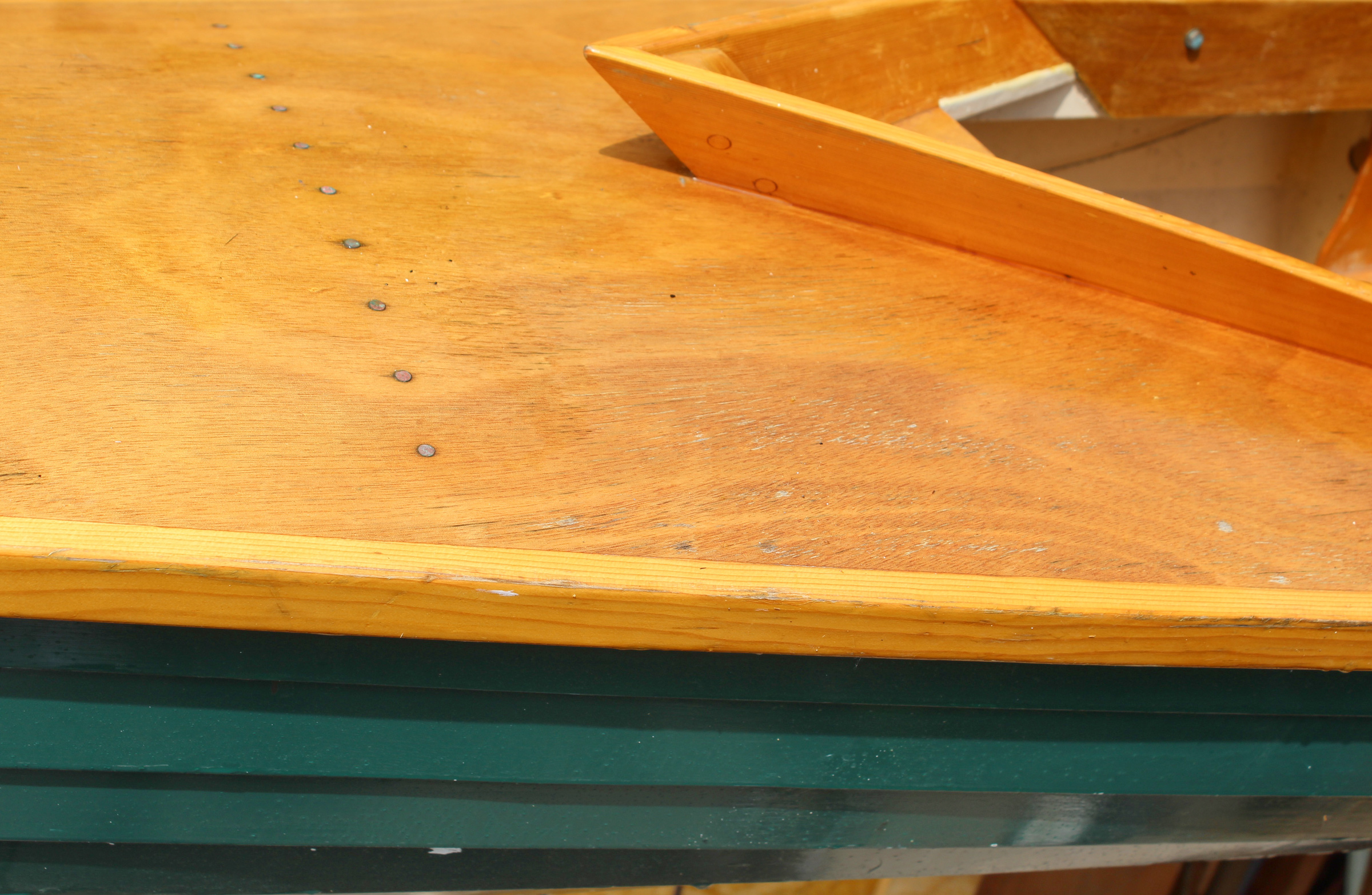
My lapstrake plywood canoe is 33 years old and still has only its original varnish and paint and primer.
Aside from the wear and tear caused by use, the paint and varnish on the canoe I built in 1988 has never been refinished and yet is still in good shape and So why did HESPERIA, which had received the same finish, fare so poorly after just 11 years? What differentiates the two is how they have been stored. That canoe has always been out of the weather, either in a basement, under the eaves on the shady side of a house, or in a garage. The cruiser has had only tarps to shelter it and they’ve done little to mitigate the effects of hot summer days.
While the advice I’d gathered over the past about using plywood fell into two camps—pro-paint and pro-epoxy—the experience I’ve gathered from the boats I’ve built says they can’t both be right, but there is a part of the discussion that seems to be missing from all of the books I’ve read: Where is the boat going to be stored? Primer and paint are inexpensive, get a boat finished quickly, and can last decades if kept out of the weather. Sunlight and moisture will take a toll on the plywood of a boat kept outdoors, even if under a tarp, and for those boats, epoxy saturation and fiberglass sheathing will add to the weight, cost, and labor but will buy time.![]()

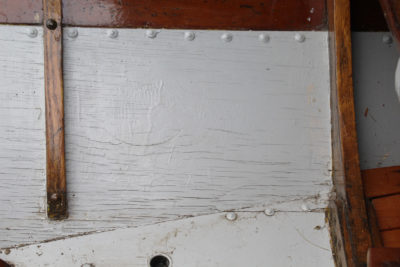
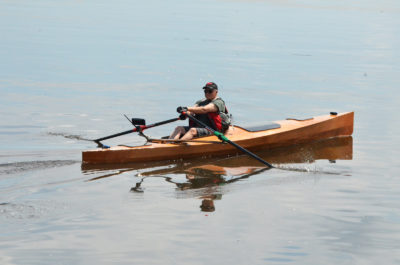
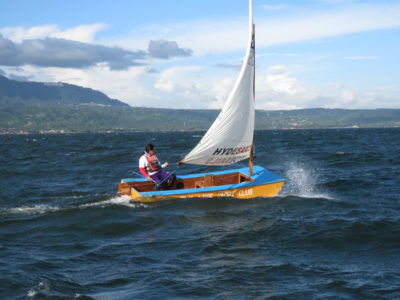
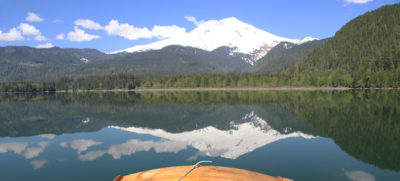
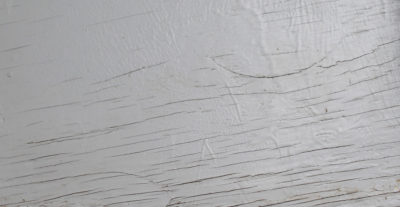
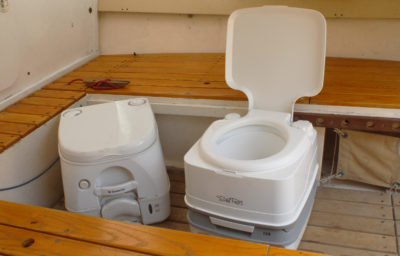
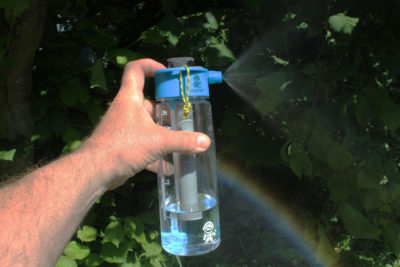
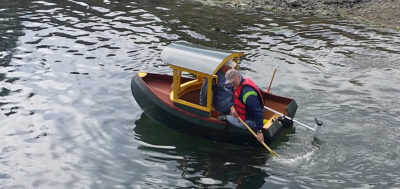
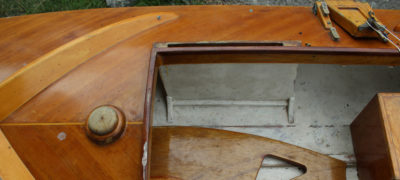
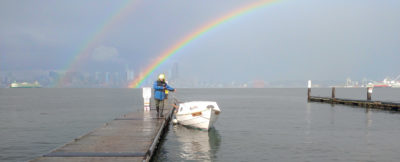

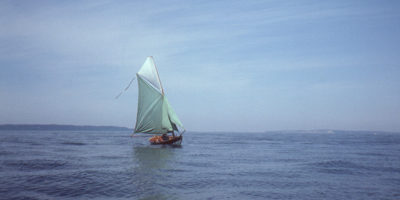
In the Chesapeake, sun exposure will damage varnish and the wood underneath in only 1 year. But when I coated with epoxy first, it lasted almost 10 years. I don’t epoxy coat every time, but if the wood is going to see hard service I’ll go through the effort and cost of epoxy.
All fine but, why oh why use rivets in plywood? Drilling holes, exposing the inner layers of the holes in the plywood to water intrusion?
Never seen it before! Sorry for my blunt question? I am Dutch, I know!
In The Dory Book, Gardner mentioned using plywood garboards in lieu of ones made of lumber in traditional construction, but made no comment about changing the fasteners too. The garboards of both the dory skiff and the gunning dory are fastened to Douglas-fir bottoms and western-red-cedar broad strakes. I don’t think glued laps would have been the way to go, as the lumber might move more than the plywood with changes in moisture and temperature. The skiff spent a month in the water during my first Inside Passage cruise, but otherwise it and the gunning dory spent their time stored out of the water. I haven’t seen any sign of paint lifting paint or softness around the rivets.
I have never had good luck using fir ply, even so-called marine grade. It almost always checks, no matter what you put on it (except, perhaps, completely sheathed in 6 ounce FG with epoxy). All my boats have been built using BS1088 Merenti, generously coated with epoxy inside and out. I typically use Interlux epoxy primer, then Brightsides one-part polyurethane as the finish coat. Some of my boats live outside year round on a trailer with nothing but a fitted cover, while others spend the summer season afloat. I have never experienced delamination or checking, and my finishes look pristine for years on end, with the occasional re-coating of the surfaces as needed.
My use of epoxy for boat building started in 1980, when I temporarily abandoned my career as a merchant seaman, to take a year-long course in wooden-boat building. Subsequently made my living for the next seven years as a boat builder/boat carpenter, and have continued that path on the side, since then. Most of my experience with epoxy has been with the Gougeon Brother’s products (WEST system), which have proven to be very versatile, and mostly satisfactory.
BUT, in my experience, the WEST system (without fiberglass) has failed in preventing checking in fir plywood. In 1984, I built a pirogue, using AC fir plywood that had absolutely no voids. Cognizant of the potential checking perils, the bottom was coated with 5 coats of WEST epoxy, the last 4 being thickened with aluminum, and graphite powders. Over the long haul, this surface DID check, and severely.
After this experience, extensive research suggested that Gluvit brand epoxy could obviate this problem; and so it did. For whatever reason, Gluvit has kicked plywood checking to the curb. Higher “modulus of elasticity”? It’s over my head. But I’ve built some stuff out of CDX yellow pine plywood (not boats!), that when coated with Gluvit, have lasted 20+ years out in the elements, with absolutely no checking.
I’m sticking (pun intended) with the WEST system for bonding, fairing, and laminating, but for epoxy encapsulation with fir, or other softwood plywoods, Gluvit seems to be the answer.
My experience with epoxy in the dozen small plywood boats I’ve built over fifty years is that it does not prevent checking or delamination over a decade when stored outside. I suspect sunlight gets through the protective paint. It certainly makes the boats much heavier. If weight is a concern, use very good plywood without covering. It will degrade faster, but it will be the lightest possible. I’ve never had even the thinnest plywood hull break, so I no longer think it needs the added strength of cloth and epoxy. If weight isn’t a concern, use plywood heavy enough and with enough plies that the outer layer doesn’t matter that much. I now feel that due to the laminate structure of plywood, it can’t be considered for boats that should last for a long time. Laminates break down. Just look at the multitude of unreliable cored decks.
Douglass fir plywood is very prone to checking due to the nature of the wood and to the manufacturing method. The wood is rotary cut and therefor subject to maximum expansion and contraction cycles.